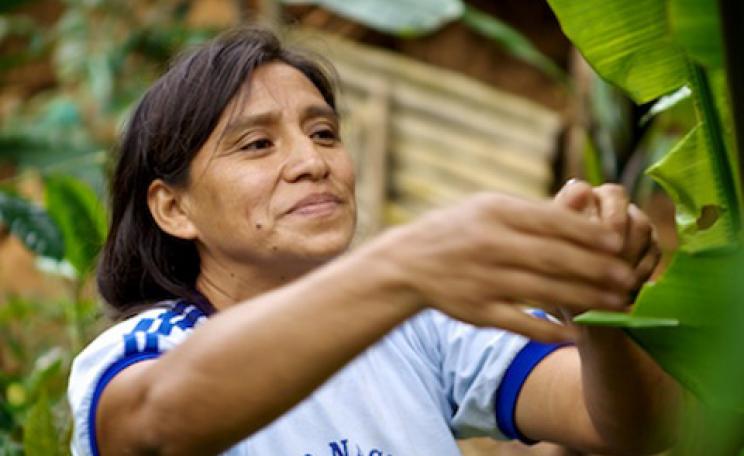Can you describe the threats to rhinos?
When I first became involved in rhino conversation in the late 80s early 90s, it was a pretty simple cross-border poaching problem into Zimbabwe. There was a wave of poaching coming down east Africa through Tanzania, Zambia and Zimbabwe. As major populations, like in Zambia, were wiped out the poachers moved on, like a vacuum cleaner moving onto another population.
This decimated the rhino population in the Zambezi valley, but 300 rhinos were saved and moved out; some to national parks and some to conservancies on private land in Zimbabwe.
By that stage, those southern areas were cattle ranching areas. We had to transform them into wildlife land in order to create a long-term enabling environment for rhino conservations, to spread burden away from the state and encourage tourism.
 How do you transform cattle farms into wildlife land?
How do you transform cattle farms into wildlife land?
They rhinos were state property and at first the landowners were receiving them out of a conservation spirit. But taking them didn't disrupt their cattle ranching; the rhinos live side by side next to cattle. They are better behaved than most people think.
The only way to keep them there was to develop wildlife and create eco tourism. We had to get ranchers to convert out of cattle production into wildlife production through various incentives. Through a project initially supported by the British-based Beit Trust in the late 1980s and undertaken through WWF, and more recently the International Rhino Foundation we were able to provide economic incentives to the cattle ranchers.
We created three conservancies over 3,200 km2. The funding helped landowners with legal strategies to draft constitutions. We required them to match that expenditure with wildlife restocking. They brought in more rhinos, and it involved the first major translocation of adult elephants.
In 1992, there was a big drought that was the final nail in the coffin for livestock production in this area. People were seeing that the long-term effects of cattle production were accumulating in terms of soil erosion, loss of grass cover, reduced water infiltration, and drying up of the rivers. All these problems had come through long-term mono-species production and these ranchers were able to see what they were doing essentially was creating a desert. The profitability of cattle ranching was declining because of global market chains and so on, and also because there had been subsidies for cattle production that applied during that era, which were falling away.
What was the role of local communities?
That was the next big thing, to bring the community involvement into the whole scheme. We did that as the restocking took place, some of the restocking was conditional upon developing community participation, and we started developing concepts to create community stakeholding in the wildlife conservancies.
To put it very simply, if one had supported the restocking of wildlife, that's like bringing in business assets. The wildlife is what you need for your tourist operations, so you can quantify those business assets and you can create shareholdings for your community trust. The community will get a dividend proportionate to their shareholdings in the operation. That was the simple concept that we started off with.
Unfortunately in 2000 we had major political upheaval in Zimbabwe. At that time all these community projects came to grinding halt and things become very difficult.
People would just move into large areas, so we had a lot of unplanned settlement in areas that were more suitable to wildlife production. You can imagine that if these areas weren't any good for cattle production they certainly weren't any good for dry land cropping. Only in good rainfall years would you get good harvest. You often have three years in a row where there's no chance of growing any crops because rainfall in those years is too low.
That's again when our rhino poaching started. Early on it was essentially snaring. People set wire snares to catch bush meat, buffalo, giraffe, animals like that, but were catching rhinos as well even though they weren't specifically intending to. Having found some dead rhinos, they then pick up the horns and initially didn't really know what to do with them. But slowly they found ways to trade them and that started off a demand. Poaching is very much like a bush fire, it starts and soon blows up out of control. As the trade and smuggling networks get established, the middlemen make themselves known, and buyers come out.
How do the poaching rings work?
Syndicates operating from South Africa perpetrate a lot of our poaching. They've got heavy weaponry and are highly mobile, they are just like bank robbers, are really aggressive, generally young men. They have good cars and cell phones, and come right across to Zimbabwe from South Africa.

These poachers are very professional in what they do, the engage in quick hit and run attacks, are extremely aggressive and generally fire first. We have very competent trackers to track our rhinos, and our guys often have to do the follow-up on poaching incursions. If a gang is detected coming into an area they are then tracked down by a law enforcement team, but our trackers are unarmed and they've been fired on increasingly to the point that we've had equip them with flack jackets.
But it has to be understood very clearly that this poaching is not done by local people from communities. Having a local community that is positively inclined towards rhino conservation will make a huge difference. The poachers have to come in through local communities, and the locals see strangers and have been reporting to us, which we want to encourage further.
The loss of tourism in Zimbabwe has hit these areas hard. What rhinos were bringing in in terms of tourist dollars was covering their protection costs. That's all changed now, none of these areas are making money, and there are no tourists.
What about law enforcement?
We are getting strong cooperation from some law enforcement arms in Zimbabwe. There are elements in the police that are trying to do a good job; there are other very corrupt elements. The Courts have demonstrated a lot of leniency towards rhino poachers, some of that's due to ignorance of the plight of rhinos and the general need for maintaining wildlife resources as part of Zimbabwe's economic recovery. Its been estimated that of the various sectors of Zimbabwe's economy, tourism could spring back quickest and quickly build up to 10 per cent of our GDP. A lot of this isn't understood by the courts, they see rhinos as a nuisance and haven't taken it seriously. There's a lot a lot of corruption and bribery in the courts, so we've struggled with that.
We've been running to sensitise the courts more about the seriousness of rhino crimes in economic and conservation terms. We've seen this year a major increase in the penalties for poachers, so things are changing a little bit.
How do you create a community shareholding arrangement to prevent poaching? 
We want to give rhinos to schools. In an area around these conservancies we've got a number of impoverished schools, a few secondary schools but mainly primary schools. What we want to do is bring in white rhinos from a few overstocked areas, which creates a revenue flow back for them to invest in their protection effort. At the moment none of these places are making money, all the operations are in the red in the moment, which makes it very difficult for them to invest in their increased protection for rhinos.
We want to create a live sale market by buying rhinos from some areas, and bring them into an area that's in need of animals. We bring in two rhinos and then choose a school through a competition that's environmentally related, and we'll give them the rhinos. As younger rhinos are born they will be bought and turned out to the scheme, and that money will come back to support the school in the form of school materials and other benefits. The schools have to show that they are doing something in their community to spread the message about rhinos.
It's really straightforward: if these animals breed, there are calves that you can sell, and you benefit. If the animals get poached, then they won't get the benefit because the animals won't be there to breed anymore. At the same time we think it will help politically as local members of parliament will see that their communities are getting some benefit, and they will in turn impose pressure on the courts to be stricter with poachers.
It will also help catalyse an approach, which I believe is the most appropriate approach to wildlife -based land reform, which is to create shareholdings to wildlife in these areas for local participants.
Wildlife on its own is not going to solve all the poverty problems. But if you have wildlife combined with a diversified approach to advancing and creating livelihoods you can lift people up. A bit of landscape planning can harmonise the landscape to everybody's benefit.
| READ MORE... | |
 |
GREEN LIVING The Really Wild Show: Namibia's pioneering conservancies From the endless red dunes of the south to the teeming game reserves of Damaraland, Namibia is home to some of the world’s most important eco-systems. Ruth Styles went to find out how local people are helping to preserve them |
 |
NEWS ANALYSIS Agroecological farming 'can double food production in Africa over next 10 years' Low-input farming projects, not reliant on chemical fertilisers and pesticides, have brought significant increases in food production in Africa, south-east Asia and South America, according to a UN report |
 |
NEWS Campaigners launch 'last ditch' attempt to save Javan rhino from extinction With fewer than 50 Javan rhino left in the wild immediate action is needed to save the species from extinction according to conservationists |
 |
GREEN LIVING Tanzania: can the country's booming eco-tourism sector ever be truly green? From local participation to wildlife conservation, Tanzania’s green tourism projects show how responsible travellers and tour operators can improve lives and ecosystems - but there's still much to do, reports Thembi Mutch |
 |
COMMENT Wildlife conservation repeatedly ignores the needs of the poor Gorillas, elephants, tigers - icons of philanthropy and generosity in the west, but also symbols of the damage that modern conservation can inflict on the less industrialised world |








